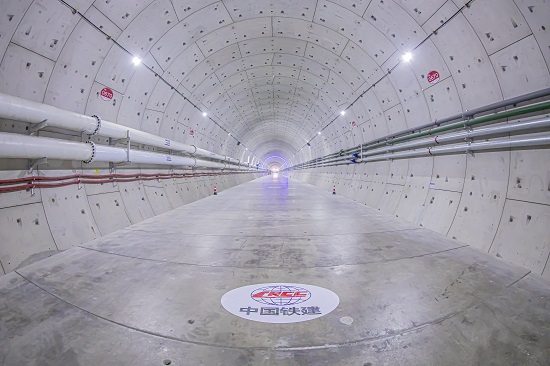 | Home | > News > Company News |
On May 29, the "Yongzhou" tunnel boring machine (TBM) transitioned from land-based to subsea excavation at a depth of 64 meters on the Ningbo side of the Jintang underwater tunnel, part of the Yongzhou Railway project undertaken by CRCC. This milestone marks the beginning of the full subsea phase for what will become the world's longest underwater high-speed railway tunnel.
The Jintang underwater tunnel serves as the critical infrastructure component of the Yongzhou Railway, running beneath the Jintang Strait between Ningbo and Zhoushan. Spanning 16.18 kilometers in total, with 11.21 kilometers of shield-driven sections, it will claim the record as the world's longest underwater high-speed rail tunnel. Construction employs two tunnel boring machines launching simultaneously from both Ningbo and Zhoushan sides, excavating toward each other through high-pressure waters and challenging geological conditions before achieving precise underground connection. The Ningbo section covers 4,940 meters, with the 14.57-meter-diameter "Yongzhou" TBM eastward in a single drive.
The seabed between Ningbo and Zhoushan presents formidable geological challenges. The tunnel must navigate beneath oil pipelines, seawalls, port facilities, and shipping lanes, reaching maximum depths of 78 meters with water pressures up to 8.4 bar—equivalent to nearly one ton of force pressing on an adult's palm. The route encounters 28 transitions between soft and hard rock formations, with the "Yongzhou" TBM facing 24 of these challenging shifts. Nearly 70% of the route consists of mixed soft-hard and solid rock formations, with the hardest rock reaching strengths of nearly 200 megapascals. The frequent geological transitions, combined with high-pressure cutter replacement operations, create construction complexities and risks rarely encountered worldwide.
Since beginning operations, the "Yongzhou" TBM has successfully navigated over 10 challenging geological transitions, completing 2,020 meters of excavation. As it progresses through the subsea section, the machine will continue its downward trajectory, boring 2,920 meters through areas with pressures exceeding 6 bar until reaching the mid-sea connection point. To address the extreme conditions of long-distance, high-pressure underwater construction, engineers have extensively reinforced the machine's sealing systems with dual-shell design and four reinforced tail seals, enabling it to withstand pressures up to 12 bar and significantly enhancing its performance in ultra-high-pressure subsea environments.
The Yongzhou Railway extends 76.4 kilometers from Ningbo East Station to Baiquan Town in Dinghai District, designed for speeds up to 250 kilometers per hour. The high-speed line primarily serves medium and long-distance tourism traffic while also accommodating intercity travel between Zhoushan and Ningbo.
